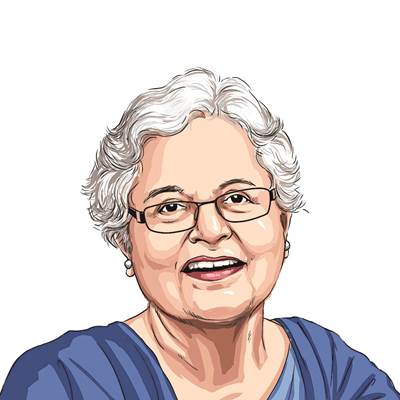Opinion The gun doesnt fall silent
Why Bofors has remained a case with no proper closure
Why Bofors has remained a case with no proper closure
Bofors Deep Throat and former Swedish police head Sten Lindstroms interview to Chitra Subramaniam-Duella is significant not so much for breaking new ground,but for reaffirming what those familiar with the Bofors case already know to be true. The official investigation into the case was not concerned with finding out the names of those who took bribes. The aim was to obfuscate. The real objective was to go through the motions without actually finding out the truth. It was to create sound and fury which in the end would signify nothing. It is no coincidence that the authorities were somehow always just one step behind the accused.
By the time the CBI had got around to impounding Ottavio Quattrocchis passport,the Italian businessman had been allowed to flee the country. A senior law officer of the Manmohan Singh government was flown to London to give permission to de-freeze Quattrocchis bank account and by the time a CBI team arrived on the scene the Rs 21 crore in his bank account had already been spirited away. Neither in Malaysia nor in Argentina were the Indian representatives alert or effective in making a strong case for the Italian businessmans extradition. The letter rogatory to the Swiss court was so sloppy and unreadable that the judge asked for fresh documents. This blundering Keystone Cops behaviour was not due to innate incompetence,but seemed part of a larger game plan. Investigating officials and prosecutors did not want to stick their necks out in case some obviously very powerful political interests got hurt.
The Congress now cites Lindstroms statement,that there was no evidence of Rajiv Gandhi having received any bribe,as proof of the innocence of the partys first family in the whole murky affair. But in the Bofors case,what is as intriguing as the question of who actually pocketed the kickbacks is why the elaborate cover-up was necessary. B. Raman,who was in a senior position in the Research and Analysis Wing (RAW) during the Bofors investigation,has admitted that a massive cover-up was there in which heads of the CBI at the front,the RAW and Intelligence Bureau in the rear,as well as some officers in the PMO who were close confidantes of Rajiv Gandhi played an active role. Rajiv Gandhis first response to the the story broken by the Swedish Radio was to dub it a conspiracy to destabilise his government. It seemed an overreaction,but it was part of a pattern. Lindstrom points out that when Bofors top executives came to India they were so anxious to ensure that the contract was not cancelled that they came prepared to reveal the names of those who took bribes. But when no one of any consequence in India came to meet them,they got the message: despite public pronouncements to the contrary,the government did not want the names of bribe takers to be given out. For Lindstrom,the most disturbing aspect was this: whenever the public prosecutor,Hans Ekblom,and he learnt of Indian investigators visit to Stockholm they would convey through the media their desire to meet them,but there was no response from the Indian side. No Indian delegation met the real investigators of the gun deal. It was then clear to Lindstrom the extent to which everyone was compromised. Eventually,Lindstrom felt his only option was to hand over the documents to someone he trusted,investigative reporter Chitra Subramaniam.
Lindstrom is also cynical of the role of the non-Congress parties. Many politicians who came to his office claiming they would move heaven and earth to get at the truth if they came to power,became silent when they held important positions directly linked to the deal. The bribe takers obviously had influence in many quarters. Ram Jethmalanis volte face on the case is illustrative. Lindstrom believes that the long debate over the quality of the Howitzer guns and the introduction of Amitabh Bachchans name were all red herrings deliberately planted to distract from the main probe.
The CBI alone cannot take the rap for the Bofors case dragging on for a quarter of a century without proper closure. Our courts too played a part. The legal systems of Sweden,Switzerland and the UK,as well as Interpol,have been more convinced by the evidence on Bofors than the Indian judges. Despite a wealth of documentary evidence,including payment instructions to banks,open and shut contracts,handwritten notes,minutes of meetings and a very revealing diary belonging to Bofors MD Martin Ardbo,with references to payments,the Delhi High Court was not convinced. The case shuttled between the high court and Supreme Court for years with the latter frequently overruling the former. In May 2005,the Delhi High Court dismissed the case against the Hinduja brothers on the technical objection that photostats and not originals of documents were provided. The UPA government,which had just come to power,did not go in for an appeal. The mystery of the Bofors payments consequently remains unresolved.
express@expressindia.com





